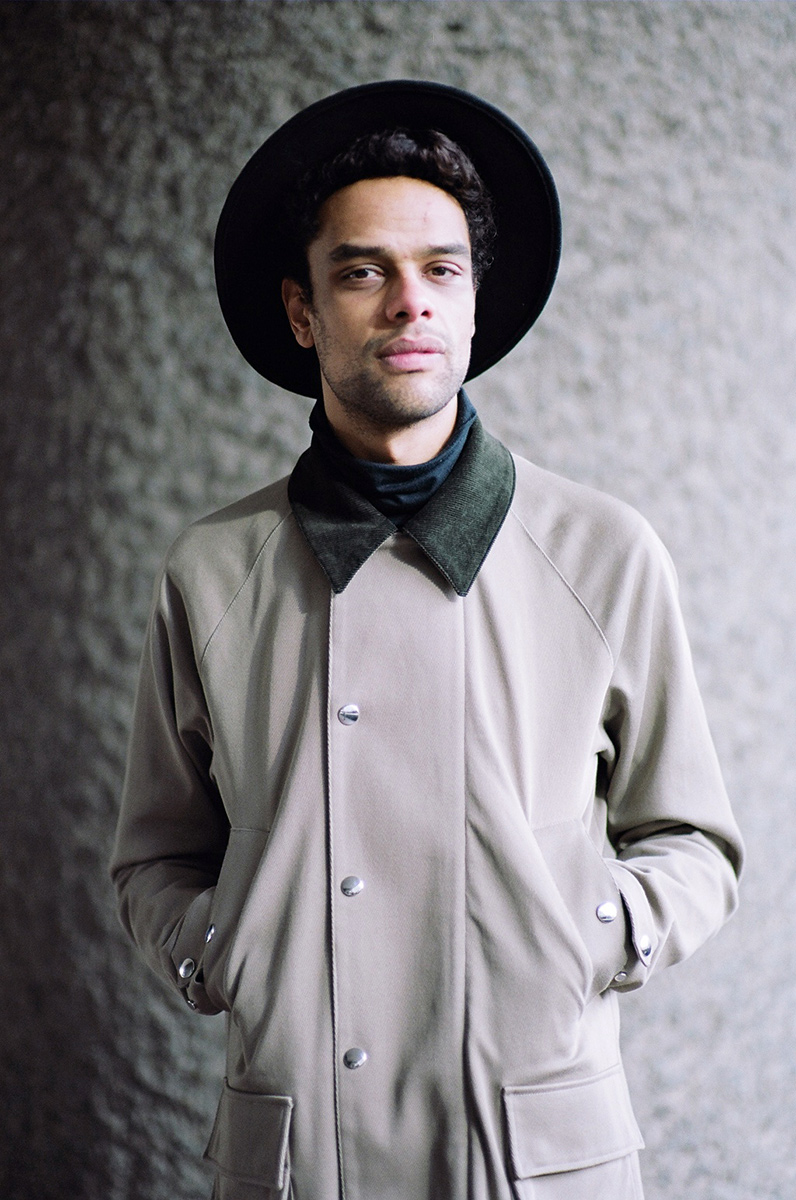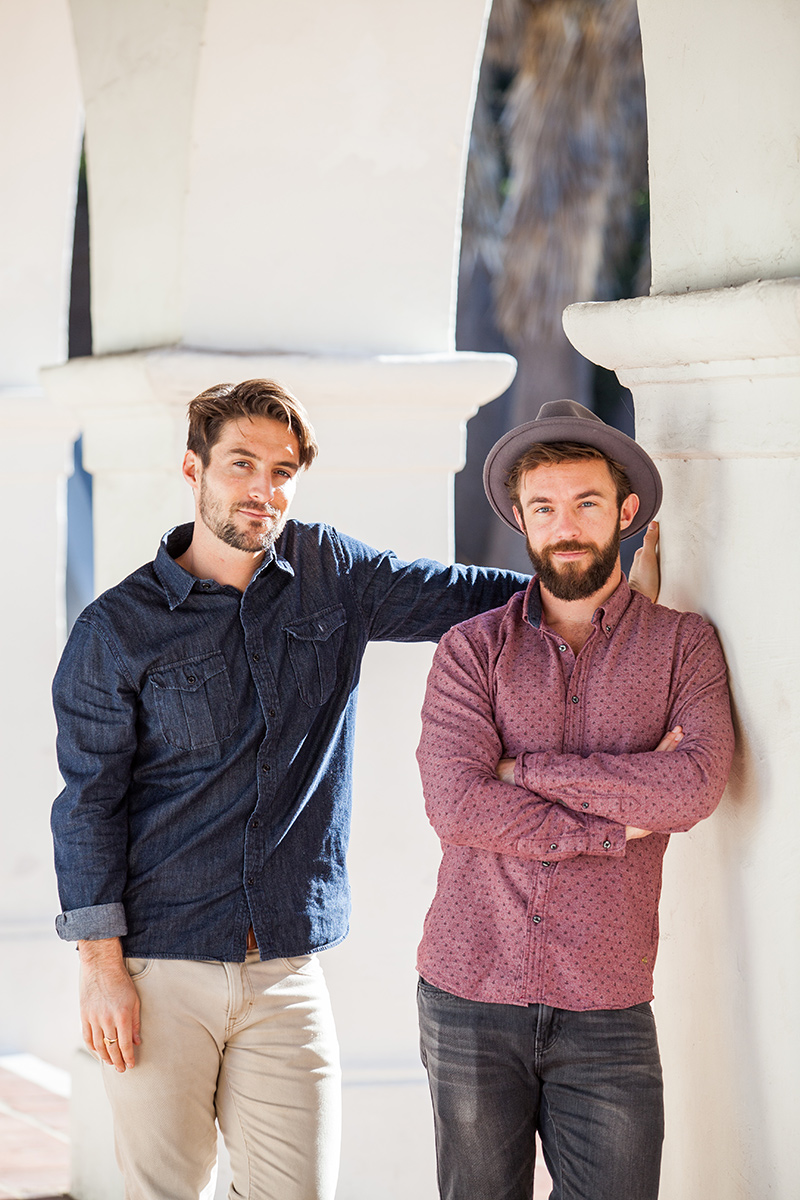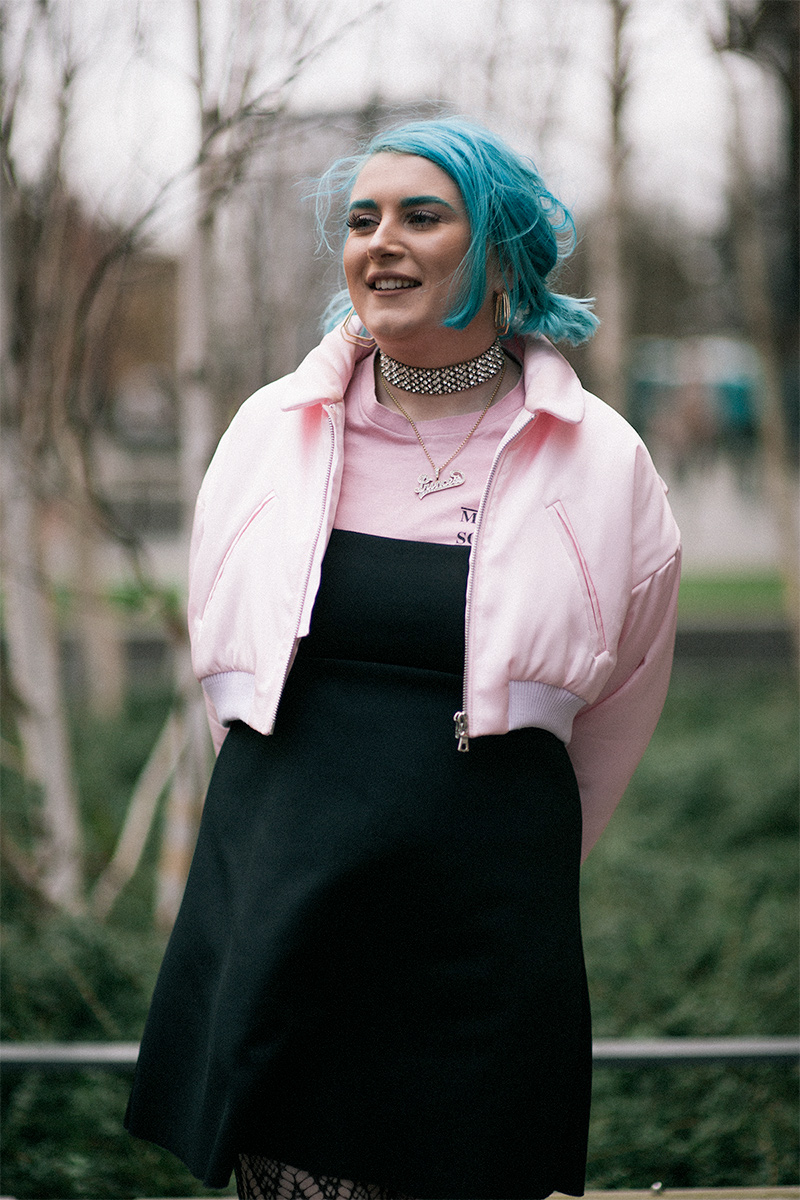Under the Influence
The landscape of social influence is changing. This means new rules and expectations when it comes to marketing on social media
In 2009, Zoe Sugg decided to start vlogging. The 19-year-old had already set up a blog, but buoyed by other vloggers she wanted to attempt her first film. One of her first successes was “60 Things In My Bedroom”, a video composed of Sugg holding up items from her room. If it sounds simple, it was. The four minute video was twee, wholesome, banal even.
At the time of writing this article, Sugg, better known by her blogging name, Zoella, has close to 10 million subscribers, two book deals and multiple brand collaborations. Her rise charts the transformation of a 19-year-old student with a strong West Country accent to a global superstar with legions of fans. It is no mean feat, and the fact that it was social media, in this case YouTube, that got her there, makes it all the more extraordinary.
Zoella is the social media star archetype. She is the success story that frames thousands of people who have garnered large followings on social networks, such as Instagram and YouTube. She may stand as the most notable example, but Zoella’s position as an online influencer is not unique. Vine star Cameron Dallas recently caused mass hysteria at Milan Fashion Week. Ian Connor was just signed to A$AP Rocky’s elusive AWGE creative collective. And Alfie Deyes, Zoella’s boyfriend, just saw his second book reach the bestseller list.
According to publisher advertising platform, Technorati, the influencer industry is worth around £156 million. Earlier this week, WWD reported that the web’s top names are making between $1 million and $3 million a year. Dedicated Insta-PR agencies are emerging to manage the people behind the most powerful handles. Both Viacom and Tumblr have developed marketing platforms that connect brands with influencers.
None of these stars are models, stylists or writers by trade. Their online profiles didn’t simply aid their superstardom, they created it. But what is it about influencers? Why are they emerging as one of the advertising industry’s greatest hopes for reconnecting with young people?
“We as consumers are more likely to take the recommendation of someone we trust in order to make a decision, than we are from a big brand,” says Mat Bickley from the influencer agency Joyn. “Now we have the tools via social media, now you’ve individuals who have the ability to connect and communicate, and to leverage the relationships and communities they have leadership over.”
With 67% of the Protein audience saying they bought something that they have seen someone share on social media, social influence is ripe territory for brands to market products. But there’s an unfortunate catch-22 to a brand’s relationship with influencers. Once you start marketing them, they may lose that sense of authenticity and relatability that made them so attractive in the first place. Back in the sixties, doctors endorsing adverts were quashed as soon as it became clear their endorsements were based on hefty payouts. Is the influencer market destined for the same fate?
Key Takeouts
- An alignment of values results in authentic content
- If you want to create awareness consider going for big reach. For affinity, consider grass rootschoices that fit the context of the brand
- Be bold by being transparent with paid posts before it becomes compulsory. If you’ve created quality content the fact that it was paid for shouldn’t matter
- A good influencer campaign will benefit the brand, the influencer, and the consumer
- Don’t forget that authenticity is rooted in real life, it’s not just online that’s of value

Jessica Prescott
@wholygoodness, 5k followers
The most powerful brand ambassadors are those who are discerning. Flogging products to social media stars who do little more than pose and hashtag is not only ineffective, it also wastes the vast potential that collaborating with an influencer can reap.
Take Jessica Prescott, for example. The recently-turned mother began her blog, Wholy Goodness, as a way to share her vegan culinary journey and encourage others to follow suit.
The content, highly aesthetic and engaging, is enough to make any bonafide carnivore droll. It’s prime territory for food and design brand partnerships.
But Prescott shies away from endorsing products too often. As she says, it’s cringe-worthy when people promote brand after brand on Instagram. “I would only ever work with a brand whose values aligned with mine,” says Prescott. “I personally don’t like it when people recommend brands that they don’t believe in and sometimes it’s hard to tell what’s genuine and what’s being paid for.”
For Prescott, social media and influencers are just an extension of magazine and style culture. After all, a user’s Instagram feed is another form of a self-curated magazine. Ultimately, what you see is inspirational and aspirational, but still relatable. “We have so much at our fingertips,” says Prescott. “Human beings are just as lost as ever, they are looking to others to guide and help them curate their own lives.”
Prescott’s imagery aligns with her values. Honest, simple, and welcoming, the food reflects Prescott’s character. But that’s not to say that the Berlin-based blogger pretends her page is a holistic reflection of her day-to-day life. Naturally, what’s presented is edited to match the Wholy Goodness aesthetic.
“I just hope that people realise that social media is such a small cross section of everyday life,” says Prescott. “I would never post a photo of the porridge I made and ate straight from the pan because nobody wants to see that.”

Raven Smith
@raven_smith, 23K followers
Raven Smith’s Instagram page reads like a visual exploration of a J.G. Ballard novel. Erratic, dark, nonsensical, creative and clever, Smith’s page is a beautifully curated collection of images that perfectly tap into the zeitgeist of his generation. Everything from Sex and the City to The Simpsons to Seinfeld is referenced. The content is understandable, but Smith’s comments are funny and subversive. “I’m always trying to be personal and universal,” says Smith explaining his choice of material. “It’s my visual take on something we can all experience. I like to think I’m super niche and yet completely accessible.”
The appeal and accessibility of Smith’s page is clear from the consistent engagement from his followers. In one of his latest posts, one user commented: “I’m slightly obsessed with your feed.”
All those themes of immediacy, accessibility, and obsession are appropriate for a platform like Instagram. It’s highly visual, and the ease with which you can upload images makes for instant gratification. “I can post something on Instagram and the reaction is instant. I feel like there’s a very small space between me and the people who follow me,” explains Smith. “I think of something and post it. There’s no big sign-off process. There’s no censorship. It’s very immediate.”
For someone so visual and forward thinking it’s not surprising that Smith only works with brands and products of a similar vein. As a brand ambassador for Clarks Trigenics and Globetrotter, Smith can reflect his appreciation for style and heritage by collaborating with companies that share his values. All in all, for Smith, the power of the influencer is understandable. “Mobile culture means I’m with you in your pocket all day making witty remarks,” he concludes. “I guess we’re in some way emotionally involved with the influencer that speaks to us, whether that’s because we’re laughing together, or we want the same eyeliner as Zoella.”

Vagabrothers
@vagabrothers, 77k YouTube followers
“Vagabrothers is a new travel show with a global perspective for the Millennial generation.” So opens the introduction of Marko and Alex Ayling’s video travel blog, Vagabrothers. With an impressive 77,144 followers, the video travel blog is one of the most exciting inducers of wanderlust there is.
It’s surprising then that when Marko and Alex wanted to turn their video blog into a profession, video production companies weren’t on board.
However, in 2013, the brothers won an international travel video competition, which paid them to travel the world for six months “Winning that competition showed us how YouTube could be an end in itself,” explain Marko and Alex. “Suddenly having our own TV show became less appealing than creating our own show on YouTube.”
The Vagabrothers are just one of a number of people who have caught on to the empowering nature of social media. Disregarding traditional media channels, these stars have risen to prominence.
“We can make whatever type of content we want and experiment until we find the right style,” say the brothers explaining the benefits of YouTube. “If something’s not working, we can switch up our whole format. For TV, you’ve got to have the whole package polished before you pitch to networks.”
The democratisation of media that platforms like YouTube offer is game changing. Audiences are international and larger, a creator’s output is less restricted and their format can adapt quickly. This creates a huge space for brands to co-create content that taps into an influencer’s audience in an authentic way. Use that space correctly and brands and creators alike can reap massive gains. “Giving up some creative control is the price brands pay for sponsored content,” say Marko and Alex.
The goal of sponsored content is to get in front of our audience, so brands need to trust creators to let us make content our audience will actually watch.”

Cora Delaney
@coradelaney, 8K followers
“When I do stuff with people it’s because I like their style. I’d never do something with someone who I didn’t rate. I think it’s so obvious when people do stuff for brands and it’s not their aesthetic.” Aesthetics is a good place to start when talking about Cora Delaney. When it comes to the London- based, twenty-year-old’s style, bold feels like an understatement. Neon blue hair and the word princess tattooed across her fingers, Delaney’s a far cry from the mainstream appeal of influencers the likes of Zoella embody. While Zoella is twee, Delaney’s edgy, and while the likes of Zoella have global appeal, Delaney’s charm is rooted in her locality.
Delaney’s done Instagram takeovers for London brands such as Keash Braids and has presented videos on Adidas and Billionaire Boys Club. “I like to support small brands and support the people I know,” she says. “That’s really important to me.” At the end of the day, Delaney’s page is an extension of her brand — it needs to represent what she as a presenter can offer and what she loves. That offer is decidedly London in feel and style. She might not be known much outside of London, but in her circles she’s got clout.
“I see social media as a way to forward my brand,” explains Delaney. “Now people can make a living out of social media, it’s weird but also empowering. What’s important to me is that I represent who I am and where I’m from.”
Growing Cynicism
Back in July of last year, Ricky Dillon posted an Instagram picture of two Coca Cola cans, one with the name Ricky on it, the other with the name Dillion. Dillon, known for his quirky YouTube videos, received a mixed reaction from his millions of followers. Many of them were amused, but others were more cynical. “Was this a paid sponsor?” asked one user. It was. Mr. Dillon had promoted Coke as part of an ad campaign for MTV’s Fandom Awards.
Then there is the now infamous example of Australian model, Essena O’Neill. With over 800,000 followers, O’Neill had a very public meltdown towards the end of last year, changing her Instagram name to “Social Media Is Not Real Life,” and re- captioning many of her pictures to reveal the money and time that belied each image.
Transparency, or a lack thereof, clouds much of sponsored content. The frustrations felt by O’Neill and Dillon’s followers weren’t that they were being paid, it was that they weren’t upfront about it. With few clear guidelines for influencer branding in place, the lines between what’s real, and what’s not quickly become blurred.
On top of this, the waters are becoming further muddied by the social media channel’s cut of the revenue. Instagram is now the medium of choice for many agencies looking to spend on influencers, except Instagram sees none of that new revenue stream. This is sure to change.
It’s not just transparency however; it’s also an alignment of values that’s questioned in the influencer landscape. It seems illogical to target influencers who don’t have any relation to a brand’s ethos or message. For example, how Dillon and Coca Cola related was unclear and the partnership seemed incongruous to many of Dillon’s followers.
It’s not just a poor move for brands, influencers themselves risk losing their cache and fanbase if they’re seen to be selling out to brands. Meaningless sponsorship like Dillon’s and O’Neill’s aren’t resonating — the values don’t match and there’s little collaboration involved.
“Collaboration is so important in brand and influencer partnerships,” says Rosie Holden of influencer agency John Doe. “Giving an influencer creative license to create content in their own style and tone of voice is imperative –and will achieve the most engagement from fans. Brands should never take a model of ‘pay to post’ - they should enable influencers to do their thing.”
Influencer 2.0
Up until now, many brands have found it difficult to relinquish creative control when it comes to making influencer content. But maintaining a tight grasp on influencer partnerships is always going to be detrimental to the final output. In most cases, influencers have garnered such a strong following because their fans enjoy the content they create. Stifling it with a heavy brand agenda is unlikely to ever be a good move.
“Way too many brands think because they’re paying content creators they can get them to do whatever they want,” explains Nic Yeeles, founder and CEO of Peg, an online tool for connecting content creators and brands. “It’s not that way at all. You have to ask yourself, why are they going to do this? It’s not because of money, it’s because it’s going to better their content somehow”
Towards the end of 2014, brothers Jack and Finn Harris, otherwise known as Jacksgap, collaborated with Skype to create three short films that document three individual women. Each one of them is empowered through technology to do what they’re passionate about. The collaboration worked, not just because the content was beautifully made, but because it perfectly married Jackgap’s work with Skype’s brand message. Jacksgap is an inspirational and informative video travel blog, Skype is a democratic global communication tool.
Influencers like Jacksgap got that reach because they were talented at producing original content that people wanted, with the specific point of view they brought to the table. If that’s the audience a brand wants to reach, it’s logical that creating content in line with the influencer’s output is more likely to resonate. Collaboration and authenticity are key.
“The number one most important thing, is that the collaboration has to feel authentic,” says Yeeles. “It has to feel like there’s a good match between the brand and the creator.” Ultimately the influencers that work are the ones that know their audience and respect their output, which may be anything from an ingrained knowledge of local subcultures to the technical ins and outs of a certain product. A great brand/influencer partnership is a marriage of values that respects an influencer’s audience and gives them creative reigns.
Where’s it all Going?
Influencers remain a key mediator between product and consumer. As social media continues to grow, what makes an influencer is changing. As consumers continue to look to their peers and immediate network for inspiration, the power of influencers and influencer content is only set to grow in the future. According to our Currency Survey, 94% of people trust the opinion of individuals over brands. It’s unlikely that the power of the influencer is going to dissipate. The direction it will take, however, is open to speculation. What’s clear is that influencers need to offer more than posed selfies and unimaginative hashtags. Rising cynicism means that brands and influencers alike need to work in tandem.
All of this means that offline is still important. Authenticity is rooted in real life. Ignoring it online has become staid and uninspiring. “Some of the biggest influencers in the skate world, for example, are at every party, every shop opening,” says Bickley. “Showing they are a part of the community. That’s what people want to emulate and look up to. So offline and online aren’t mutually exclusive. At best, when they work to their fullest they are completely connected.”
At present, there’s no way of accurately quantifying the sales an influencer reaps for brands, so the success rates of influencer campaigns are currently unknown. With ‘shop now’ buttons now available on Instagram, this could be set to change. What’s clear is that increasing scepticism towards advertising, seen in the rise of services like Adblocker, means influencers are sure to stay for the foreseeable future. Using them correctly, however, means seeing them as more of an artist than a prop.
“You only have to look at their ever-growing follower numbers to see that influencers are increasing in popularity,” says Holden. “However, people will start to rebel against influencer marketing, searching for something more authentic again. The best thing a brand can do at this time is to nurture up-and-coming talent, support them and build long term relationships, and reap the reward.”


